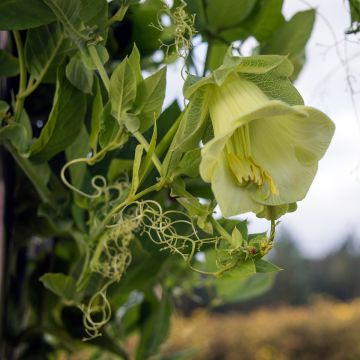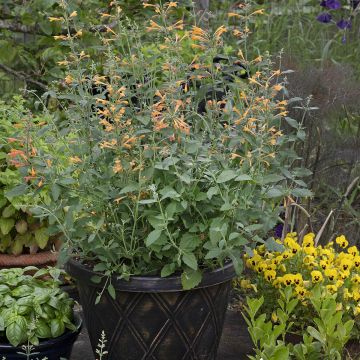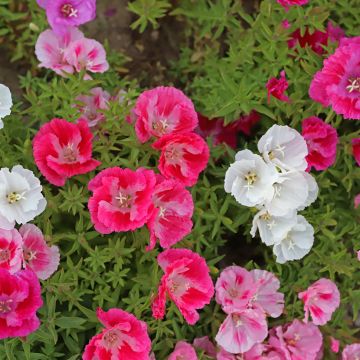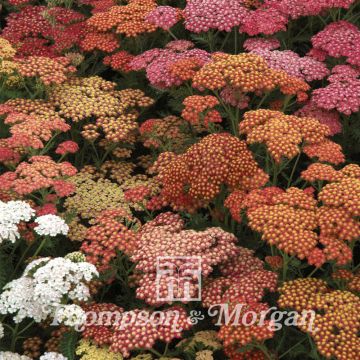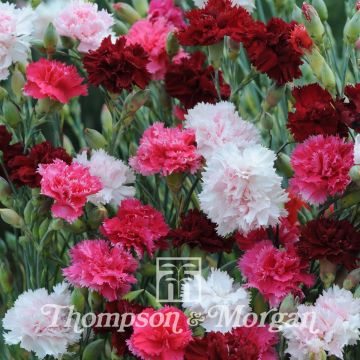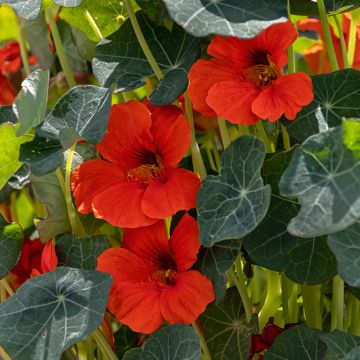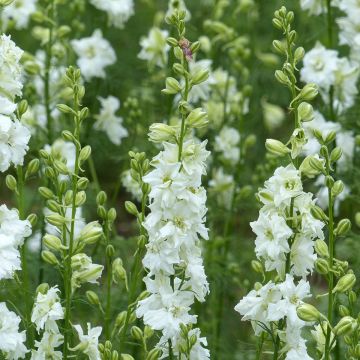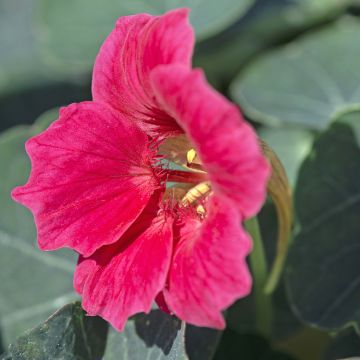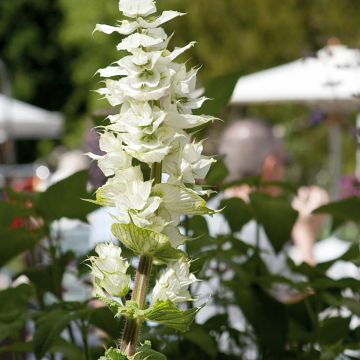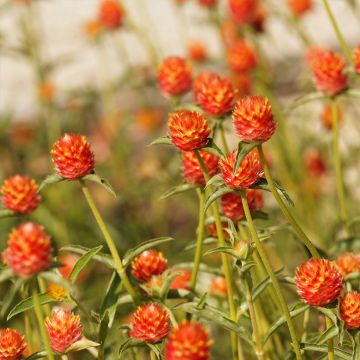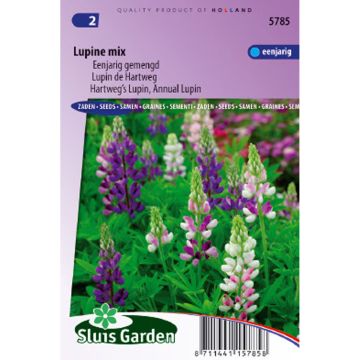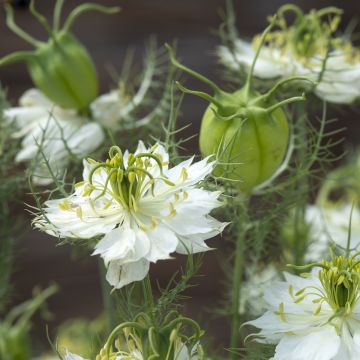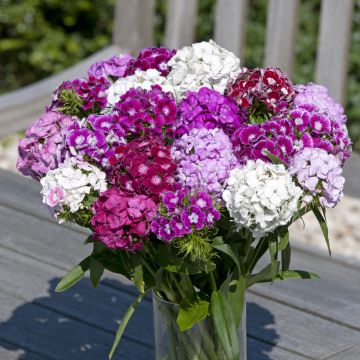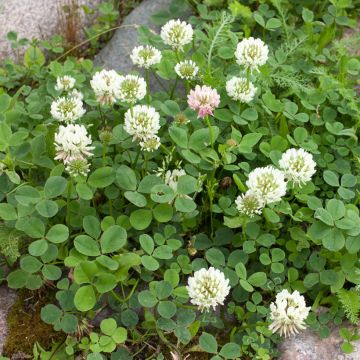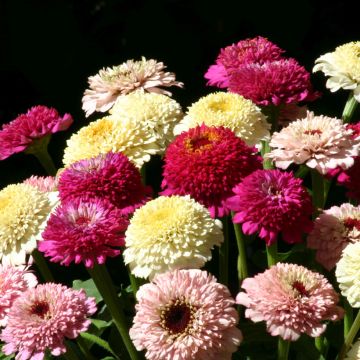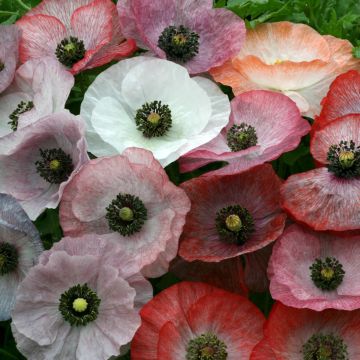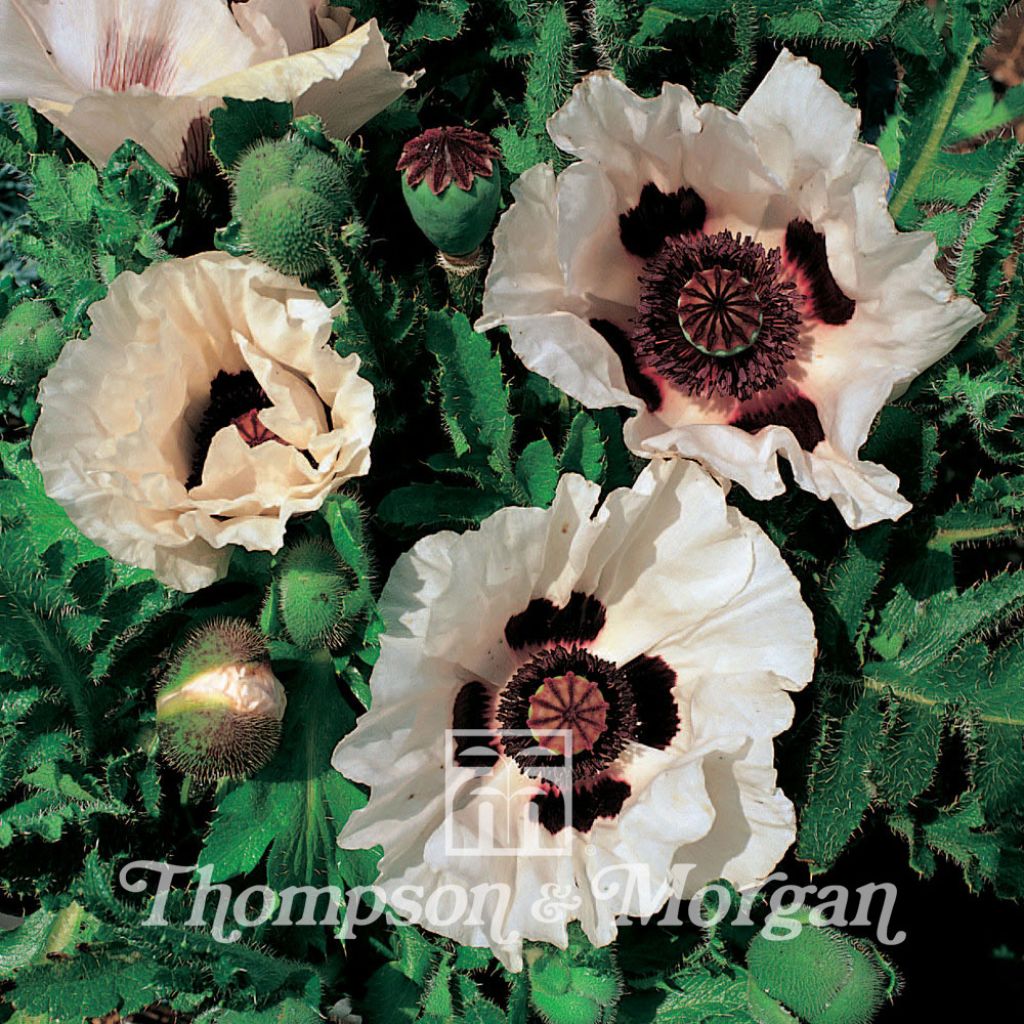

Pavot Checkers
Papaver orientale Checkers - Oriental Poppy
Papaver orientale Checkers
Oriental Poppy
No results
Dominique P., 12/10/2018
This plant carries a 6 months recovery warranty
More information
We guarantee the quality of our plants for a full growing cycle, and will replace at our expense any plant that fails to recover under normal climatic and planting conditions.
Seed-only orders are dispatched by sealed envelope. The delivery charge for seed-only orders is €3.90.
Does this plant fit my garden?
Set up your Plantfit profile →
Description
A well-contrasted flowering in the year of sowing, for the silky white petals of this Oriental poppy, also known as Papaver orientale Checkers. Its corolla twirls around a beautiful dark heart populated with black stamens. Perennial and hardy, it can be sown in sunny flower beds. It is also distinguished by its sturdy stems emerging from beautiful bluish-green foliage, and its pretty fruits, at the end of the season, are useful in dried flower arrangements.
The Papaver orientale, or Tournefort's poppy, is a herbaceous perennial of the Papaveraceae family, native to Asia. 'Checkers' has sturdy stems, reaching approximately 75 cm (30in) in height. It forms a bushy clump in one season, reaching a minimum height of 45 cm (18in) (for the foliage) and a minimum width of 30 cm (12in). If sown early, its flowering begins as early as late spring, in May, and continues in June-July, generally stopped by heat and drought. Each flower stalk bears a pendant bud that turns towards the sky, giving birth to a large single flower with slightly crumpled, creamy white silky petals adorned with a black macule at the base around a dark heart. The flower remains open for a few hours before dropping its petals. Well-established plants produce several flower stalks, ensuring more flowers for about three weeks. After flowering, the foliage tends to disappear, leaving room for a small basal rosette in autumn, characteristic of adaptation to high temperatures and summer drought. This plant has large, rough, and hairy leaves, giving it a decorative grey-blue reflection. The fleshy and deep roots of this Oriental poppy do not tolerate transplantation well, especially in adult plants.
An excellent transitional plant for flower beds, the 'Checkers' Oriental poppy blooms during a lull period (after spring flowering and before summer flowering). It pairs very well with vibrant colours like red or bright pink. Oriental poppies are equally at ease in sophisticated flower beds like cottage gardens or wildflower compositions. Associate them with artemisias, lavenders, asters, and nepetas with delicate flowering. They also beautifully accompany autumn stonecrops, whose foliage develops during summer, Damask roses, and cosmos for a summery atmosphere with soft colours. In any case, accompany them with perennials as they fill the empty space after flowering. They are also sturdy and undemanding plants, capable of living in poor, rocky, and dry soils in summer.
Report an error about the product description
Flowering
Foliage
Plant habit
Botanical data
Papaver
orientale
Checkers
Papaveraceae
Oriental Poppy
Cultivar or hybrid
Other Thompson and Morgan seeds
Planting and care
Preferably, sow the seeds of Oriental poppy directly in place, outside, from March to May. Rake the soil carefully and sow the fine seeds just below the soil's surface. Water regularly, especially during dry periods. When the young poppy plants are large enough to handle, thin them out, leaving a spacing of 30 cm (12in) between each plant.
You can also sow Oriental poppy from February to May on a light and moist compost surface at around 15°C (59°F). Do not cover the seeds. Place in a mini-greenhouse or a plastic bag until germination, which usually takes 10 to 21 days. Keep the seedlings in a well-lit place, as this facilitates germination.
When they are large enough to handle, transplant the young poppies into 8 cm (3in) pots or deep trays. The pots and trays should be kept cool. When the plants are well-developed, gradually acclimatise them to the outside for 7 to 10 days before planting them in the garden. Plant the poppies 30 cm (12in) apart, in a sunny position, in fertile and well-drained soil. Later sowings can overwinter under a cold frame and be planted in the garden in the following spring.
Oriental poppy is a hardy plant that can tolerate temperatures as low as -20°C (-4°F). Like most poppies, it is easy to grow. It can thrive in any soil, even limestone, as long as it is well-drained. This plant dislikes heavy, waterlogged soils in winter. The soil should also be deep so that its long, fleshy taproot can develop properly. It must be planted in full sun.
Sowing period
Intended location
-
, onOrder confirmed
Reply from on Promesse de fleurs
Flower seeds
Haven't found what you were looking for?
Hardiness is the lowest winter temperature a plant can endure without suffering serious damage or even dying. However, hardiness is affected by location (a sheltered area, such as a patio), protection (winter cover) and soil type (hardiness is improved by well-drained soil).

Photo Sharing Terms & Conditions
In order to encourage gardeners to interact and share their experiences, Promesse de fleurs offers various media enabling content to be uploaded onto its Site - in particular via the ‘Photo sharing’ module.
The User agrees to refrain from:
- Posting any content that is illegal, prejudicial, insulting, racist, inciteful to hatred, revisionist, contrary to public decency, that infringes on privacy or on the privacy rights of third parties, in particular the publicity rights of persons and goods, intellectual property rights, or the right to privacy.
- Submitting content on behalf of a third party;
- Impersonate the identity of a third party and/or publish any personal information about a third party;
In general, the User undertakes to refrain from any unethical behaviour.
All Content (in particular text, comments, files, images, photos, videos, creative works, etc.), which may be subject to property or intellectual property rights, image or other private rights, shall remain the property of the User, subject to the limited rights granted by the terms of the licence granted by Promesse de fleurs as stated below. Users are at liberty to publish or not to publish such Content on the Site, notably via the ‘Photo Sharing’ facility, and accept that this Content shall be made public and freely accessible, notably on the Internet.
Users further acknowledge, undertake to have ,and guarantee that they hold all necessary rights and permissions to publish such material on the Site, in particular with regard to the legislation in force pertaining to any privacy, property, intellectual property, image, or contractual rights, or rights of any other nature. By publishing such Content on the Site, Users acknowledge accepting full liability as publishers of the Content within the meaning of the law, and grant Promesse de fleurs, free of charge, an inclusive, worldwide licence for the said Content for the entire duration of its publication, including all reproduction, representation, up/downloading, displaying, performing, transmission, and storage rights.
Users also grant permission for their name to be linked to the Content and accept that this link may not always be made available.
By engaging in posting material, Users consent to their Content becoming automatically accessible on the Internet, in particular on other sites and/or blogs and/or web pages of the Promesse de fleurs site, including in particular social pages and the Promesse de fleurs catalogue.
Users may secure the removal of entrusted content free of charge by issuing a simple request via our contact form.
The flowering period indicated on our website applies to countries and regions located in USDA zone 8 (France, the United Kingdom, Ireland, the Netherlands, etc.)
It will vary according to where you live:
- In zones 9 to 10 (Italy, Spain, Greece, etc.), flowering will occur about 2 to 4 weeks earlier.
- In zones 6 to 7 (Germany, Poland, Slovenia, and lower mountainous regions), flowering will be delayed by 2 to 3 weeks.
- In zone 5 (Central Europe, Scandinavia), blooming will be delayed by 3 to 5 weeks.
In temperate climates, pruning of spring-flowering shrubs (forsythia, spireas, etc.) should be done just after flowering.
Pruning of summer-flowering shrubs (Indian Lilac, Perovskia, etc.) can be done in winter or spring.
In cold regions as well as with frost-sensitive plants, avoid pruning too early when severe frosts may still occur.
The planting period indicated on our website applies to countries and regions located in USDA zone 8 (France, United Kingdom, Ireland, Netherlands).
It will vary according to where you live:
- In Mediterranean zones (Marseille, Madrid, Milan, etc.), autumn and winter are the best planting periods.
- In continental zones (Strasbourg, Munich, Vienna, etc.), delay planting by 2 to 3 weeks in spring and bring it forward by 2 to 4 weeks in autumn.
- In mountainous regions (the Alps, Pyrenees, Carpathians, etc.), it is best to plant in late spring (May-June) or late summer (August-September).
The harvesting period indicated on our website applies to countries and regions in USDA zone 8 (France, England, Ireland, the Netherlands).
In colder areas (Scandinavia, Poland, Austria...) fruit and vegetable harvests are likely to be delayed by 3-4 weeks.
In warmer areas (Italy, Spain, Greece, etc.), harvesting will probably take place earlier, depending on weather conditions.
The sowing periods indicated on our website apply to countries and regions within USDA Zone 8 (France, UK, Ireland, Netherlands).
In colder areas (Scandinavia, Poland, Austria...), delay any outdoor sowing by 3-4 weeks, or sow under glass.
In warmer climes (Italy, Spain, Greece, etc.), bring outdoor sowing forward by a few weeks.

































